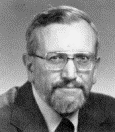Department of Physics and Astronomy: Publications and Other Research

John R. Hardy Papers
Document Type
Article
Date of this Version
11-15-1968
Abstract
We have calculated the lattice distortion produced by a body-centered interstitial Cu atom in a Cu host lattice. The calculations have been carried out consistently on the basis of discrete lattice theory, using the technique of lattice statics which is based on the Fourier transformation of the direct-space equilibrium equations. The force constants for the perfect lattice have been taken from measured phonon-dispersion curves, and we have used Huntington's Born-Mayer potential to describe the interaction between the interstitial atom and the atoms of the host lattice. The comparison of our results with those obtained by earlier workers, using semidiscrete matching techniques in which a continuum displacement solution is matched to the displacements of a few close neighbors of the defect, indicates that this latter technique is very unreliable. Similarly, the activation volumes estimated by semidiscrete techniques are also unreliable. We have also used the technique of lattice statics to calculate the strain-field interaction between two body-centered interstitial Cu atoms as a function of their separation. As in the case of the displacement fields, we have made these calculations for two different models which differ in the input elastic constants. For what we believe to be the most realistic of our models, we find a repulsive energy of 0.40 eV for two nearest-neighbor interstitials and a repulsive interaction of 0.0975 eV between two second-neighbor interstitials, For the same model, the calculated formation volume per interstitial is 1.12 atomic volumes.


Comments
Published in Physical Review Volume 175, Number 3, 15 November 1968. Copyright 1968. Used by permission.